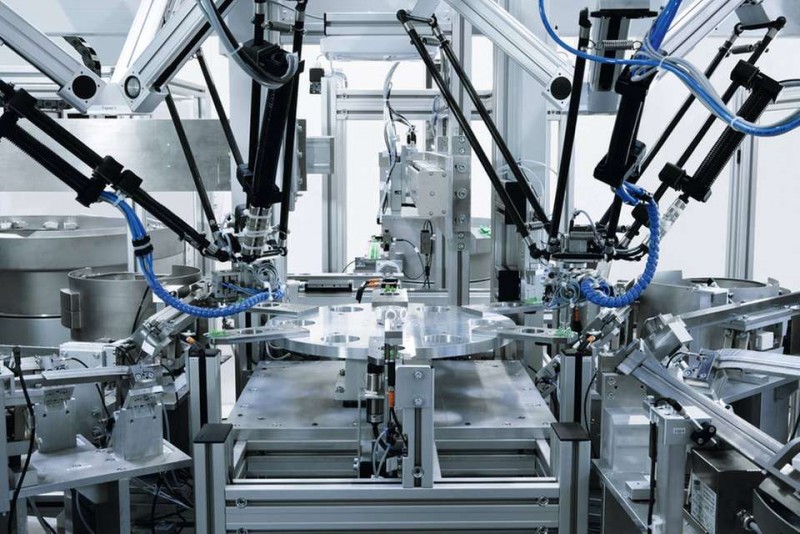Request In-house Training Proposal
Please fill in the below form to receive our Latest Offers/Discounts for Individuals.
Why Attend This Training Course?
The course is designed for engineers and technicians who are working in industries and factories as a responsible for maintain pneumatic units to keep them aware with latest technology in those fields and also to improve their skills.
What Is The Training Course Methodology?
This training methodology illustrates the concepts involved in the above areas through practical consideration of actual real-life problems, as well as explanation of concepts by experts in area using video projectors and computer aided case studies based on practical applications. Participants will solve their system problem, where the trainee’s try to apply the skills learnt with guidance from our specialized experts. ACAD will provide participants a comprehensive assessment on the problems solved using the skills acquired in the training course.
Who Should Attend This Training Course?
This training course is designed for Engineers or technicians with adequate background in mechanical drawings.
What Are The Training Course Objectives?
Understand the function and construction of the main pneumatic components
Be able to read and understand the pneumatic circuit diagrams
Be able to assemble and Design simple pneumatic circuits
Understand the Sequence of Operation for Pneumatic Control Systems
Learn the construction and operation of electro pneumatic control systems
Be able to interconnect electro Pneumatic control systems
Learn the basic trouble-shooting procedures for the electro Pneumatic systems
Be able to read and draw the step-function diagrams for electro Pneumatic circuits
Learn the difference between conventional electrical systems
What Is The Training Course Curriculum?
Pneumatic Theory
Applications depends on Pneumatic control systems
Advantages and disadvantages of using compressed air
Units and dimensions
Properties of gas
Theory of flow
Pressure Definitions
Bernoulli's Principles and Applications
Compressed air preparation
Types of compressors
After coolers
Air reservoir
Air dryer
Filters
Regulators
Lubricators
Pneumatic control valves
Valve functions
Valve types
Valve operation
Valve mounting
Valve sizing
Accessories
Check valves
Speed controller
Quick exhaust valves
Shuttle valves
And valves
Pneumatic Timers
Pneumatic Sequence valves
Introduction to Electricity
Historical View of Electricity
Direct Current and Alternative Current
Precautions when dealing on Electricity
International Protection Rating
Electric Circuit Components
Electric Power Supply
Transformers
Electric Switches
Functions of Relays
Types of Relays
Electromechanical Limit Switches
Proximity Sensors
Pressure Switches
Photoelectric Sensors
Thermostats
Float Switches
Automation Studio Program ( AS )
Introduction to Automation Studio
Definitions of Menus and Library
Pneumatic component Menu
Variables and Links between Components
Example on Pneumatic Circuits Diagrams
Implement of Practical Applications of Pneumatic Systems
Direct control of a single-acting cylinder
Indirect control of a single-acting cylinder
Logic OR Function
Logic AND Function
Memory Circuit and Speed Control of a Cylinders
The Quick Exhaust Function
Pressure Dependent Control Function
Time Delay Dependent Control Function
Control of Multiple Actuators
Control of Multiple Actuators with Overlap
Sequence of Operation for Electro Pneumatic Systems
Introduction to understand sequence of operation
Path step chart
Function chart
Applications on function chart
Flow chart analysis for Electro Pneumatic Control Systems
Apply now
Search in Courses
Register Upcoming Courses
Training Categories
- Leadership, Strategy and Management
- Human Resources and Training
- Accounting and Finance
- Public Relations and Office Management
- Marketing and Sales
- Supply Chain and Logistics
- Health, Safety and Security Management
- Contracts Management and Legal Skills
- Interpersonal Skills and Self-Development
- Project Management
- Information Technology
- Mechanical Engineering
- Electrical and Electronic Engineering
- Industrial and Production Engineering
- Oil, Gas and Petroleum Engineering
- Civil and Construction Engineering

 14 - 25 Apr
14 - 25 Apr Cairo, Egypt
Cairo, Egypt $2500
$2500
